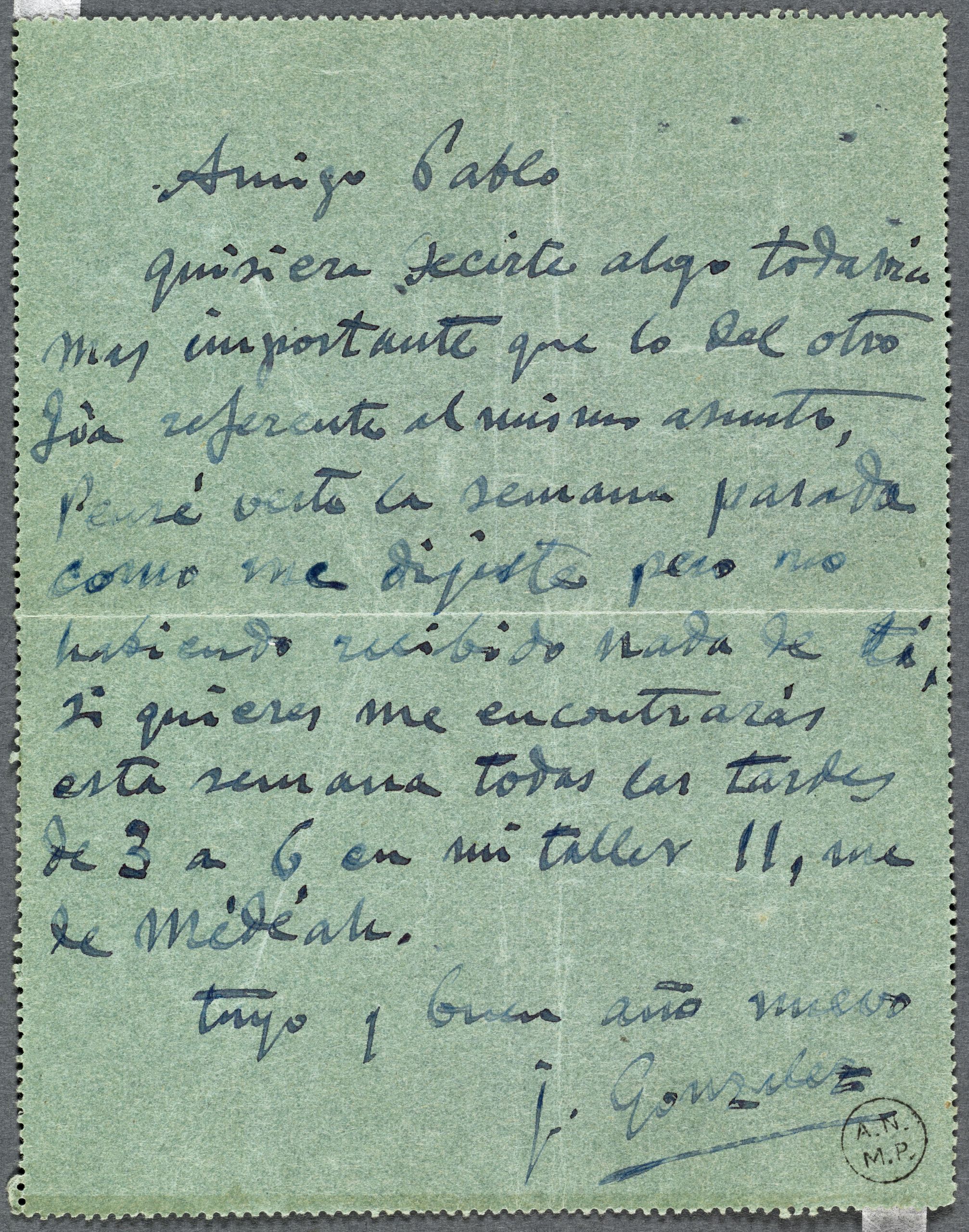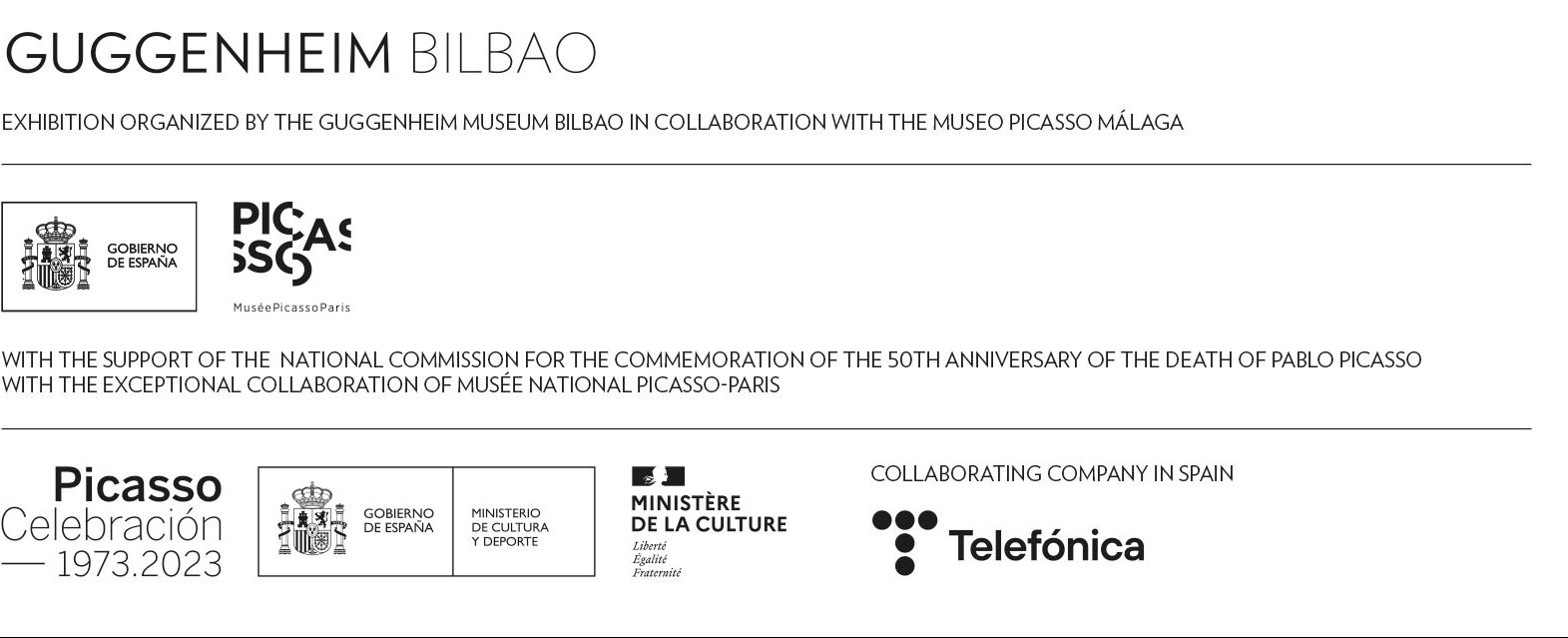
Pablo Picasso
Pneumatique de Gonzalez à Picasso, González Julio, (1876-1942)
Paris, musée national Picasso - Paris
Photo © RMN-Grand Palais (Musée national Picasso-Paris) / Mathieu Rabeau
In 1927 Picasso was commissioned to create a monument for the tomb of his friend the poet Guillaume Apollinaire (b. 1880; d. 1918). For this artwork, he devised a sculpture composed of fine lines and void, echoing Apollinaire’s work of fiction, The Poet Assassinated (1916). In this story, Apollinaire foreshadows his own death, and for his tomb the “Bird of Benin” [Picasso in reality] sculpts a “statue of nothingness, of emptiness.” For the execution of such a radical approach, Picasso turned to his friend, sculptor Julio González (b. 1876; d. 1942). Picasso’s figures, sketched and reduced to simple lines, are transformed into a three-dimensional sculpture composed of metal rods, thanks to Gonzalez’s knowledge of welding and forging. Whereas all of Picasso’s proposals for the Apollinaire monument were rejected, this collaboration launched Picasso into a period of great experimentation and sculptural creation.
Sponsored by:


